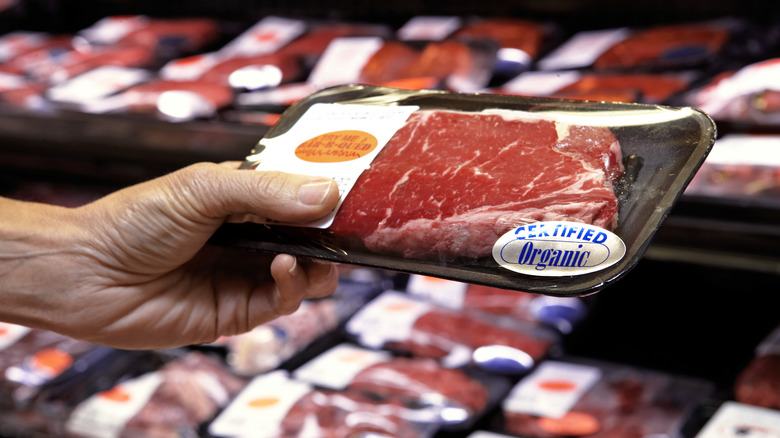Restaurants Are Tricking You With This Labeling Loophole
Have you ever ordered something at a restaurant, tasted it, and thought, "This isn't quite right?" It might be because you're being misled by a little restaurant industry razzle dazzle.
As Town & Country explains, many USDA terms used to describe official food grades for manufacturers are also used by restaurants, even though the USDA doesn't oversee restaurant grading for upmarket meats. Terms like prime, choice, premium, and deluxe are commonly used to imply that restaurant dishes are made with higher-quality ingredients, allowing restaurants to charge more for everyday food items.
According to the USDA, manufacturers may advertise meat like beef, pork, and veal using terms like "select," "choice," and "prime," if they meet very specific USDA grade requirements, such as fat distribution and the age of the animal. But unlike grocery stores and manufacturers, restaurants are considered retailers, so they are exempt from these terms. This labeling loophole allows restaurants to use meat that is often intentionally mislabeled on restaurant menus.
"This has been going on for as long as I've been cooking," explained chef Tom Colicchio in a NYT article. "When you start really getting into this stuff, there's so many things people mislabel."
What restaurants don't tell you
But what exactly do all these terms mean? The USDA issues grades for beef and poultry sold commercially, with eight grades for beef alone, based on the age of the animal and how marbled the meat is. But most people probably only recognize the top three: prime, choice, and select, which is why they are commonly used in marketing. Chicken may similarly be marked as Grade A, B, or C by the USDA, though not all commercial poultry producers opt to have their product graded, and most Grade B and C chicken never makes it to the grocery store or restaurant.
There are also generic words like "fancy" and "homestyle" that are used as descriptors in restaurants without any practical backing. The word "organic" is an official USDA certification that applies to products that have met rigorous standards, like refraining from the use of certain pesticides and fertilizers, and raising livestock that have not been treated with hormones or antibiotics. But, as with meat grading, restaurants can advertise their chicken or fish as "organic" without having to adhere to any USDA organic guidelines or restrictions.
The easiest way to tell if you're getting the wool pulled over your eyes is basic common sense. If your prime steak tastes off, it might be an inferior cut in disguise. The more you learn about different classes of meat, the easier it will be for you to spot a fake.

